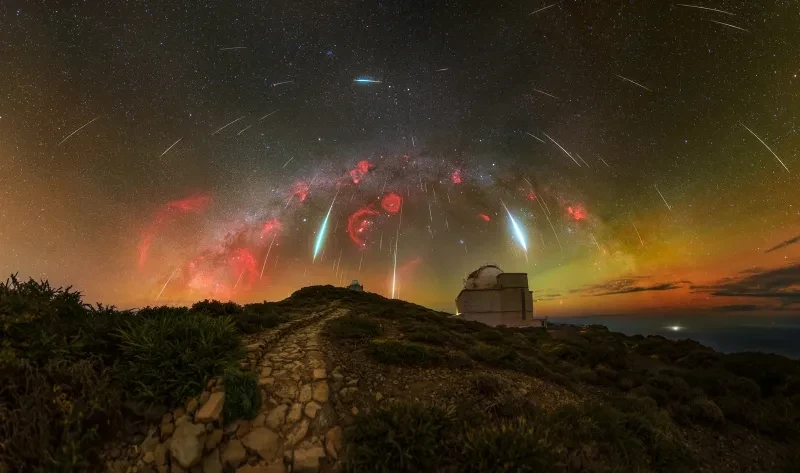
What are comets, meteors, shooting stars, meteorites and asteroids made of? And what is the difference between them all?
Comets, meteors, meteorites and asteroids include some of the smallest interplanetary objects astronomy is concerned with but they are among the most spectacular and the only ones we are likely to come into contact with before space travel becomes common!
Whether you are wishing on a ‘shooting star’ or wondering about the likelihood of an asteroid ending life on earth, keep your eyes on the skies for these objects.
What’s a comet?
Generally speaking, a comet is a frozen ball (of water, carbon dioxide, ammonia and other organic carbon compound ices) hurtling through space. As these substances stream off the comet they form a spectacular gas and dust cloud of enormous length that can often be seen from Earth with the naked eye.
Meteors and meteorites
A meteor is a piece of space debris that burns up as it enters the earth’s atmosphere creating a ‘shooting star’. Certain times of the year are known for spectacular displays and these are generally associated with comets that have passed by after spewing fragments in their wake.
Occasionally, a larger fragment will fail to burn up completely and when it hits the ground it is called a meteorite.
Asteroids and minor planets
Asteroids range greatly in size with some approaching the size of small planets. The largest asteroid is Ceres, it is 1003 km in diameter. Pallas and Vesta (the only asteroid at all visible to the naked eye) have diameters of about 500 km and 30 more asteroids have diameters greater than 200 km. Most asteroids, however, are small objects only a few kilometres across.
The compositions of asteroids are very similar to those of meteorites and this has led to the idea that meteorites originated in the asteroid belt.
Main image: Comet 2022 E3 (ZTF) Disconnecting Event of the Tail © David Cruz, Astronomy Photographer of the Year 2023 Planets, Comets and Asteroids



